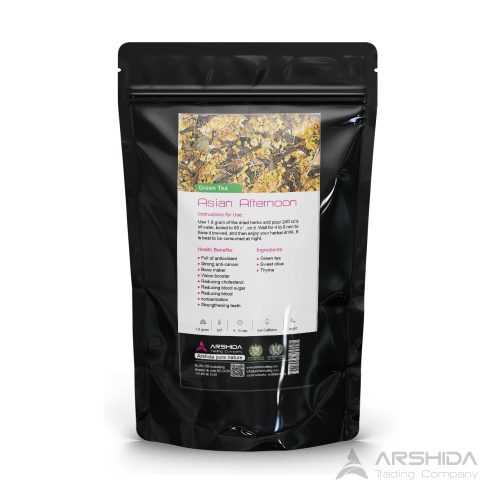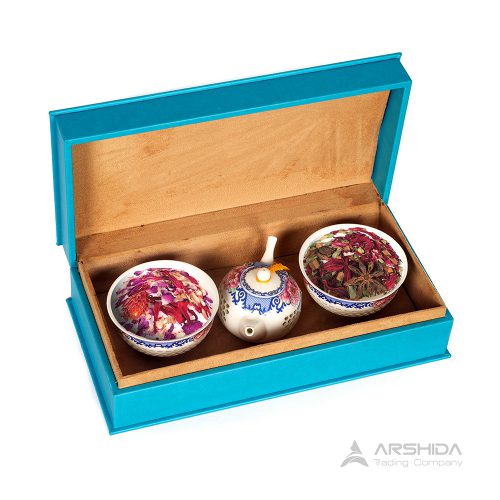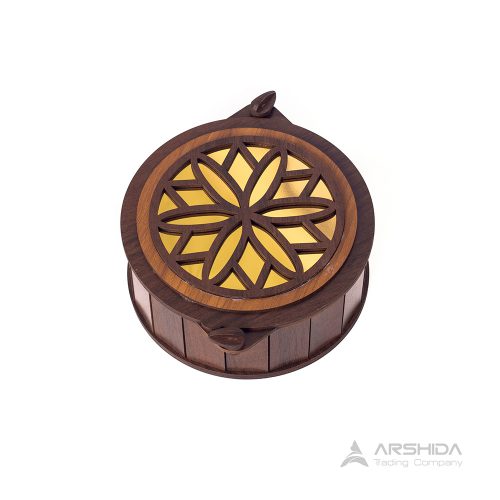
Sargol saffron
نوامبر 14, 2019
Luxury packaging
دسامبر 3, 2019Luxury packaging
Black Tea
Green tea
Herbal tea
oolong tea
Pu-erh tea
Red tea
White Tea
Arshida Tabiat Nab
Arshida International Trading Company, with the Arshida brand, is undoubtedly the most prominent brand in the production of medicinal herbs in the Middle East. Thanks to its skill, commitment, and the latest technology and knowledge in the production and packaging of herbal teas containing the best and most refined raw materials. The company can easily compete with the world’s leading brands by relying on a wide variety of products with unique flavors and aromas. Skill, trust, and quality are the three basic principles for the production of remarkable herbal products. With 112 different herbal blends, Arshida provides a wide variety of flavors, aromas, and characteristics derived from selected herbs and experience in their production. What follows is an introduction to these products.
Herbal Tea
Medicinal herbs have been popular worldwide since ancient times, because they are 100% natural and medicinal herbs do not have any of the side effects of chemical drugs. Today, the use of medicinal plants to prepare healthy drinks with a pleasant taste and aroma along with medicinal and therapeutic properties has become very popular all over the world. Thanks to the latest knowledge, experience and skills, we seek to offer unique blends. Given the great variety to satisfy all tastes with our products and leave happy and unforgettable moments for customers.
White Tea
This tea originates from the Fujian province of China. It has the least oxidation among all types of tea. White tea is made from the first buds grown on the tea tree. Therefore, it has a very high appeal compared to other Chinese teas. It may be a big challenge for people who are used to the aroma, taste and color of black tea. Different types of white tea are categorized based on their quality and price. Silver Needle White Tea has the highest quality and popularity. It is also the most affordable type, consisting of silver buds and larger leaves.
Black Tea
Black tea is arguably the most common and well-known tea, with the highest cultivation rate for tea bags worldwide, which is generally blended with other types of tea to achieve various new blends. Like morning or evening tea, it can be mixed with milk or sugar. Black tea has a stronger aroma, flavor, and color than other types of tea due to its oxidation cycle. Kenya and most Asian countries, for example. Sri Lanka, China, and India have the highest cultivation rates of black tea worldwide.
Red Tea
Red tea or hibiscus tea, also known as Mecca tea, is a beverage made from the petals of the Chinese rose. It is red and sour. In ancient times, red tea was used as a refreshing drink and to relieve the symptoms of heart disease. It is common in some cultures such as China, Mexico and even Europe. In Sudan and Egypt, it is served as a ceremonial drink for special events. This drink is suitable for people looking for an alternative to regular tea.
Pu’er Tea
It is called Pu’er due to its extraordinary fermentation properties and also its origin. Hunan Province in China, Pu’er tea not only strengthens the immune system due to its probiotic properties and beneficial bacteria. It also helps in weight loss by improving digestion. The older the leaves, the better their taste and aroma. Therefore, tea is usually stored in bamboo cans for several years to maintain its quality.
Oolong Tea
Oolong tea is a type of tea that originates from the Fujian province of China, especially the Wuyi Mountains and the mountain ranges of Taiwan. This semi-oxidized tea is made from large, overgrown leaves. It varies greatly in terms of oxidation, aroma, and flavor. In addition, it has one of the most difficult and complex production cycles, and its quality is directly proportional to the skill of the producers.
Green Tea
Green tea is the tea that most closely resembles the original tea buds among other types of tea. The small spring buds used as green tea contain the highest levels of nutrients that the plant has absorbed through the roots during hibernation. Green tea, which ripens in early spring and lasts for 6 to 8 months, is popular worldwide for its refreshing and invigorating properties. Its aroma and flavor are reminiscent of the freshness of green tea fields and the refreshing sea breeze.




Reviews
There are no reviews yet.